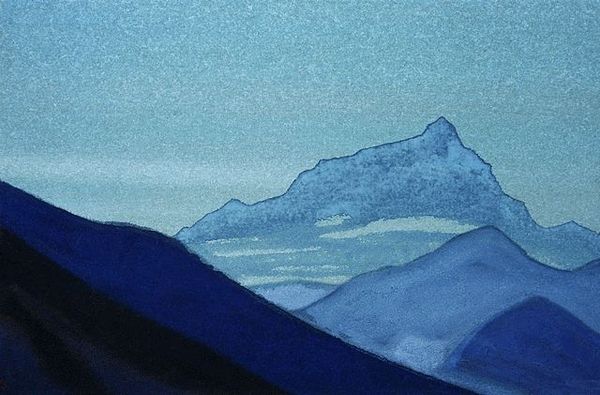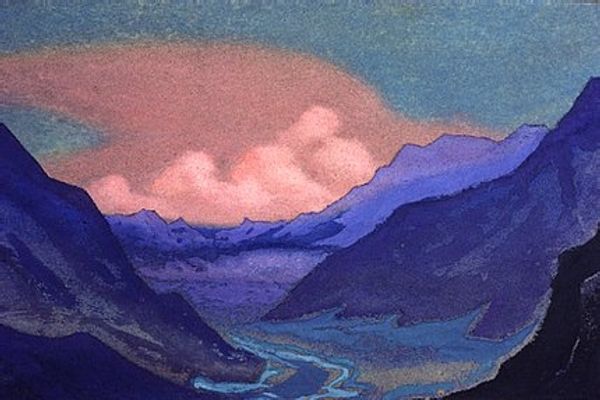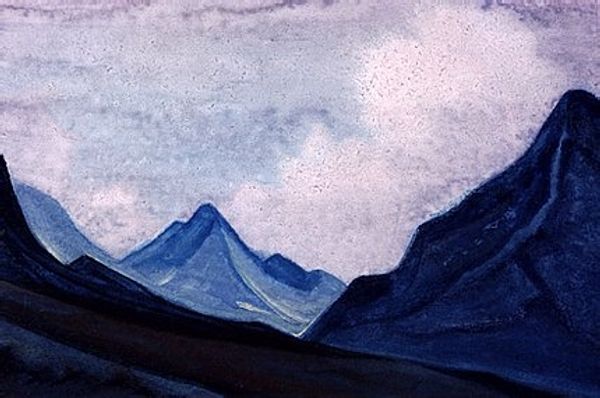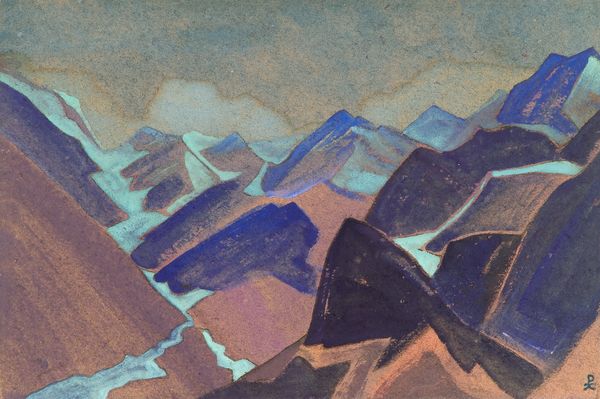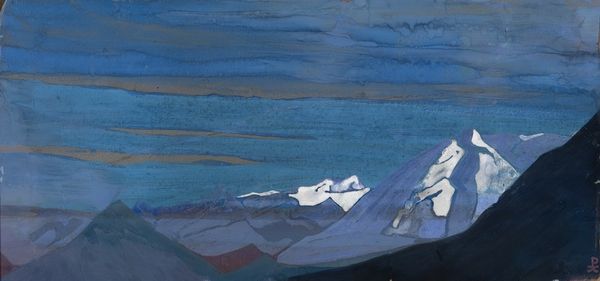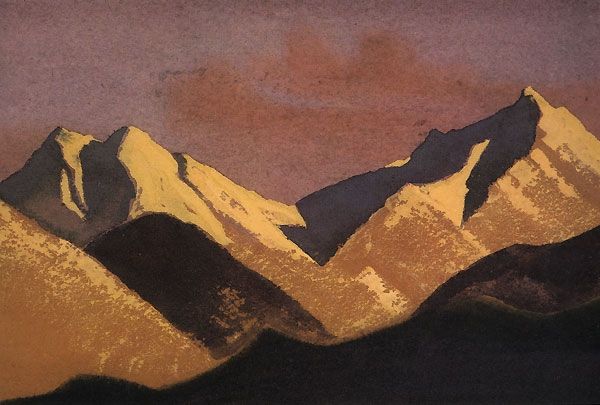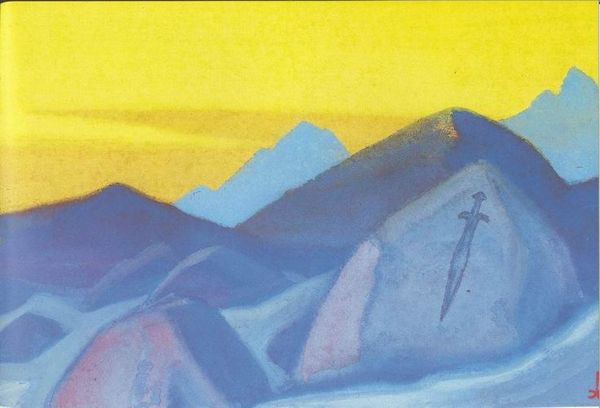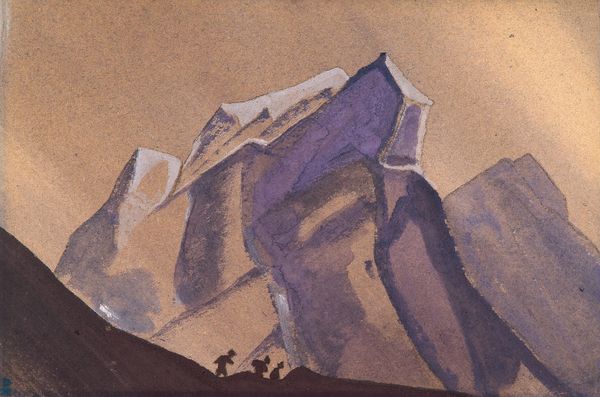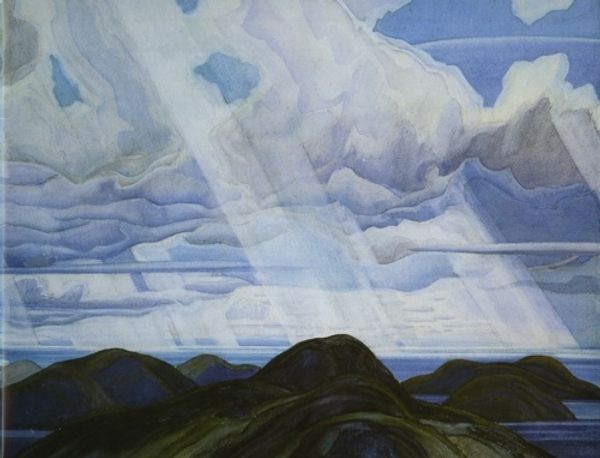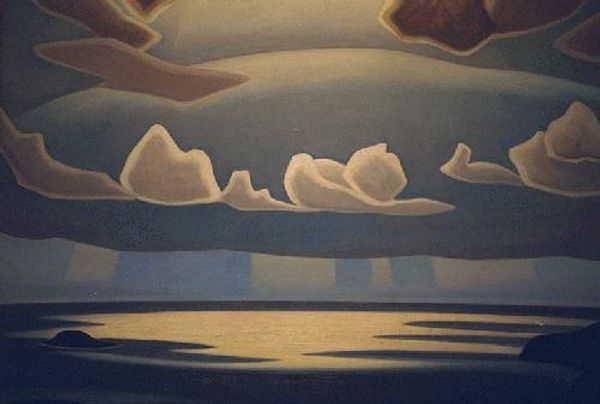
Copyright: Lawren Harris,Fair Use
Curator: The stillness of this scene is really striking. There's a somber quiet that washes over me. Editor: Indeed. Here we have Lawren Harris's 1924 painting, "Maligne Lake, Jasper Park," rendered in oil on canvas. The Group of Seven were captivated by scenes like these, which is fitting considering the project of nation building they undertook, creating new images for Canadians to connect with a landscape that was in fact changing quite quickly. Curator: The muted palette works wonders here. It's all about layered browns and greys, emphasizing the material qualities of the pigments and the artist’s hand. He's reduced the landscape to its bare essentials, almost as if depicting a landscape stripped of any human interference. Editor: Harris wasn't alone in that aspiration, of course. The Group of Seven's romantic nationalism was complex, rooted in an elitist conception of the northern landscape. They consciously aestheticized nature to bolster the image of a rugged Canadian identity. How does this simplification reflect that impulse, would you say? Curator: By stripping away details, Harris is able to suggest an "authentic" Canada, pristine and untouched, a strategic move considering the increasing industrialization of the time. We must remember that the materials themselves also carry stories: where the pigments were sourced, how they were processed, and the social conditions surrounding their production. It prompts us to question whose vision of Canada is truly being represented. Editor: Absolutely. Harris often expressed his belief that art should serve a higher spiritual purpose, imbuing the landscape with symbolic weight. Consider the scale: large canvases meant for public consumption, meant to shape collective identity through shared aesthetic experiences. Curator: The brushwork, particularly the layering of thin glazes, creates an almost ethereal quality. The deliberate use of line and form showcases the careful craftsmanship that belies the painting’s apparent simplicity. It really makes you contemplate what is deemed "Canadian art" and who gets to define that. Editor: It’s remarkable to consider how "Maligne Lake, Jasper Park" fits into the broader narrative of Canadian art history and the politics of its visual representations. These paintings weren't just aesthetic endeavors; they were active participants in shaping Canadian identity. Curator: Precisely. It leaves me thinking about how the construction and dissemination of artistic narratives always has a hand, shaping our perception of reality and material culture.
Comments
No comments
Be the first to comment and join the conversation on the ultimate creative platform.

